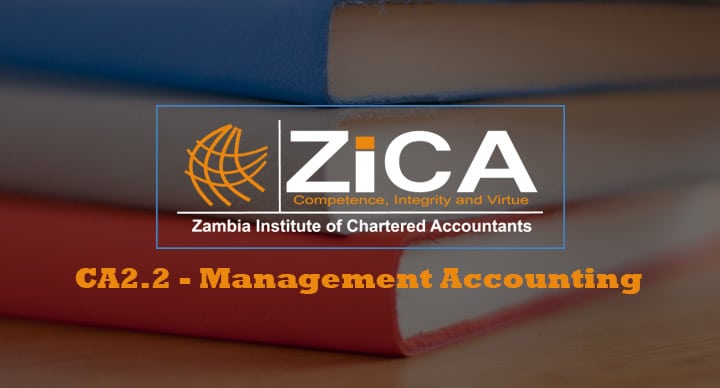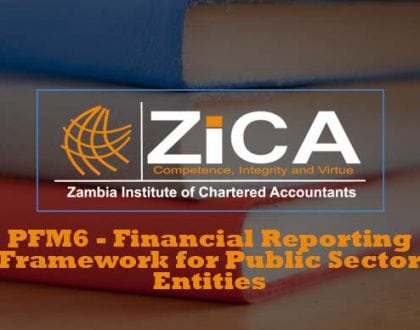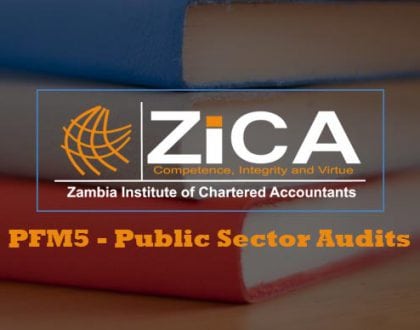CA2.2 – Management Accounting
No access plans exist.

Course Features
Course Details
CA2.2-Management Accounting
On completion of this module, candidates will reach a competency sufficient to be able to:- Apply costing techniques
- Explain management information and reporting requirements for both public and private sector organisations
- Apply techniques to support decision making
- Apply managerial budgetary control systems
- Determine prices for products and services using cost and other information and advise on product pricing
| Syllabus topics | Weighting (%) | LO |
| Management information and reporting | 20 | 1 and 2 |
| Costing techniques | 20 | 3 and 4 |
| Decision making | 20 | 5, 6 and 7 |
| Budgeting | 20 | 8, 9 and 10 |
| Product and service pricing and budgetary control | 20 | 11–15 |
- LO1: Explain the scope of management accounting for private and public sector organisations
- LO2: Identify the general framework of information that management accounting will use to support decision making
- LO3: Explain cost classification and cost behaviour
- LO4: Select and apply appropriate costing methods
- LO5: Select, apply and evaluate measures to optimise decisions over a range of organisational problems
- LO6: Address how organisations can incorporate risk and uncertainty into decision making
- LO7: Identify the role of non-financial issues in decision making
- LO8: Explain how budgeting frameworks match performance objectives
- LO9: Describe the budget creation process and explain some of the difficulties that may be encountered in this task
- LO10: Evaluate the different types of budgets that may be employed in organisations
- LO11: Calculate product and service prices using a range of costing methods
- LO12: Prepare and present performance management reports
- LO13: Apply flexed budgeting techniques
- LO14: Demonstrate budgetary control using variance reports and advise management on the outcomes of variance analysis
- LO15: Advise management upon suitable pricing strategies Management
- Management information and reporting: LO1, 2
- Explain the differences in approach to management accounting between profit, non-profit, government and government-related bodies
- Explain the role of management accounting to meet the needs of wider stakeholders, particularly in relation to sustainability
- Identify costs and their classification, explaining the differences between variable and fixed costs
- Outline the nature of budgeting and responsibility accounting
- Describe the problem of overheads and outline allocation methods
- Explain the problem of public service provision where costs are hard to measure, where cost behaviour is not always exact, and where operational or non-financial factors are often priorities
- Costing: LO3, 4
- Explain cost classification, paying attention to cost objects, cost accumulation, and manufacturing cost elements
- Explain the different types of cost behaviour
- Explain and apply different costing methods including job and batch costing, contract costing, service costing, and process costing
- Apply costing methods to problems using materials and labour data, paying attention to inventory valuation methods, inventory control techniques, and remuneration and incentive schemes
- Decision making: LO5, 6, 7
- Calculate cost volume profit analyses and break even analyses based on a given business and given data and information using both numerical and graphical techniques evaluating the results and advising on management action including single and multiple product decisions
- Select relevant cost bases based on given data and information, evaluating the results and advising on management action
- Explain how non-financial issues inform decision making
- Select relevant limiting factors for a scarce resource or resources in a given business scenario applying a relevant technique given business objectives including make or buy decisions
- Budgeting: LO8, 9, 10
- Explain the appropriateness of the budgeting frameworks that might be employed in organisations to suit performance objectives
- Explain the budget creation process and the importance of forecasting,
- Explain the information needs to support budgets and the limitations of budgets in the face of difficult-to-measure and non-quantifiable factors
- Identify the behavioural implications of budgeting and budgetary control
- Specify the types of budgets that might be employed in organisations, including:
- Fixed and flexed
- Zero based
- Activity based
- Rolling budgets
- Functional
- Master
- Product, service pricing and budgetary control: LO11, 12, 13, 14, 15
- Calculate the optimum selling price for a product or service using given data and information for a given business and advising management, using:
- Absorption costing
- Marginal costing
- Activity based costing
- Standard costing
- Apply flexed budgeting techniques to a given scenario
- Calculate, using given information, and advise management on the implications of and actions required based on variances, including:
- Sales, price and volume variances
- Materials use and price variances
- Variable overhead expenditure and efficiency variances
- Fixed overhead volume, capacity and efficiency variances
- Material mix and yield variances
- Sales mix and quantity variances
- Planning and operational variances
- Calculate performance management reports that reconcile actual and budgeted results
- Advise management upon suitable pricing strategies for a given business based on a given business scenario and given business objectives, including:
- Cost plus pricing
- Marginal cost pricing
- Target pricing
- Life cycle pricing
- Backflush accounting
- Calculate the optimum selling price for a product or service using given data and information for a given business and advising management, using:
This course does not have any sections.





